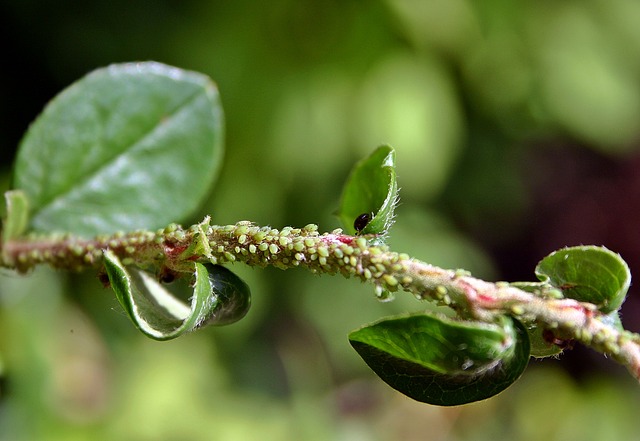Last updated on October 23rd, 2023 at 08:57 pm

If you have a few trees in your yard, like we do, you’ll quickly be tempted to leave the leaves out in the fall. With the arrival of spring, I can tell you from experience when that’s a good idea – and when it’s not.
Leaving leaves lying around is the ideal solution if you don’t have the time or inclination to pick them up. But wait: before you leave leaves lying around, try to understand what exactly actually happens when they are left lying around.
But now explained: what actually happens to the lawn when it is covered with leaves?
Contents
- 1 Leaves And Lawn: What Happens Under The Natural Cover?
- 2 Leaves Help Against Aphids – At Least Indirectly
- 3 Decay Processes Can Damage Your Lawn
- 4 Leaves Serve As A Natural Cover For Lawns And Beds
- 5 Collecting Lawn: With The Lawn Mower
- 6 Learning From Nature – Leaves In The Forest
- 7 What Now – Leave The Leaves Or Not?
- 8 Author
Leaves And Lawn: What Happens Under The Natural Cover?
It’s interesting to see how much happens when leaves are simply left on the ground. Several processes are affected. An understanding of this is extremely important.
Leaves Help Against Aphids – At Least Indirectly
Few consider that a garden where beds are filled with leaves can become a home for numerous insects. Their growth and reproduction is favored by the many leaves. This seems unimportant for our garden, but turns out to be an important factor.

After all, where there are more insects, aphids are suppressed. These natural enemies of the garden can become a danger to many plants and either worsen growth or even destroy it altogether.
Leaves are collected -> insects may grow worse -> aphids encounter fewer natural enemies in the spring and can spread more easily.
So if you rake up leaves and even neatly bag them to take to the landfill, always remember: aphids will thank you.
Decay Processes Can Damage Your Lawn
Leaves decompose, with some rotting taking place. This can become a problem for other plants if the foliage is so high that, for example, blades of grass can no longer absorb sunlight. Because as we know: What happens when turf is not regularly dried by the sun? Moisture remains, promotes the growth of moss and causes the plants to become acidic. They are suppressed or die.
But for this to happen first, there must actually be quite a bit of foliage in the garden, completely covering the lawn. If it is just a few leaves that continue to provide access to light for the blades, you should not worry.
Leaves Serve As A Natural Cover For Lawns And Beds
Also unknown to many: Foliage serves as a natural protective cover, keeping cold out of the soil. This is especially important for lawns, which have to withstand quite a bit in winter when temperatures drop below 0 degrees.
If you have too much foliage in your yard, you can resort to a simple and proven trick.
- Collect leaves and put them in bags, for example.
- Wait a few days / weeks
- Spread dried leaves on the beds again
These steps will ensure that wet leaves do not become a rot hazard for flower beds. The dried leaves then do not provide additional moisture, only the protective effect against cold.
Collecting Lawn: With The Lawn Mower
Until the last cut, you can also simply mow falling leaves. Most lawn mowers have no problem with this. Simply attach the collector and mow over the leaves. The leaves are chopped up by the blade and end up neatly in the collection container. This is only recommended if leaves are not too high, otherwise the motor will be overloaded.
The shredded leaves can be easily thrown on the compost or collected elsewhere. Since it is already shredded, it should decompose more quickly.
Learning From Nature – Leaves In The Forest
Leaves fulfill an important function in nature: they provide the soil with new nutrients. As soon as the leaves are shed in the fall, the decomposition process begins. The foliage loses its color and becomes thinner and thinner until it is finally transformed into humus. Numerous organisms are involved in this process, leaving behind valuable nutrients.

For the garden, however, this way can be adopted only conditionally. Wouldn’t it be nice if you could just leave leaves in the garden instead of fertilizing?
But the fact is that many plants used in the garden do not need the nutrients in the amount given by foliage. This is different in the forest, where nature develops without much human intervention and the supply and demand of nutrients is automatically balanced.
The fact is, however, that soil in general, as well as some plants native here in Europe, benefit when leaves are left lying around and then decomposed. The nutrients gained from this help healthy growth in the coming year.
What Now – Leave The Leaves Or Not?
If you want to leave foliage in your garden, investigate the requirements of the plants – especially if you bought them expensively at the garden center a few months ago. Not every plant will like leaves, the permanent moisture and decomposition underneath.
If you have a healthy lawn, which has already had a winter, leave the leaves lying around. In this way you will enjoy a pleasant atmosphere throughout the fall, while the lawn will have protection against frost.
But remember that leaves unfortunately spread quickly with the wind. You can soon find it in other beds, in front of the front door and in the parking lot. But this is somehow part of autumn.


